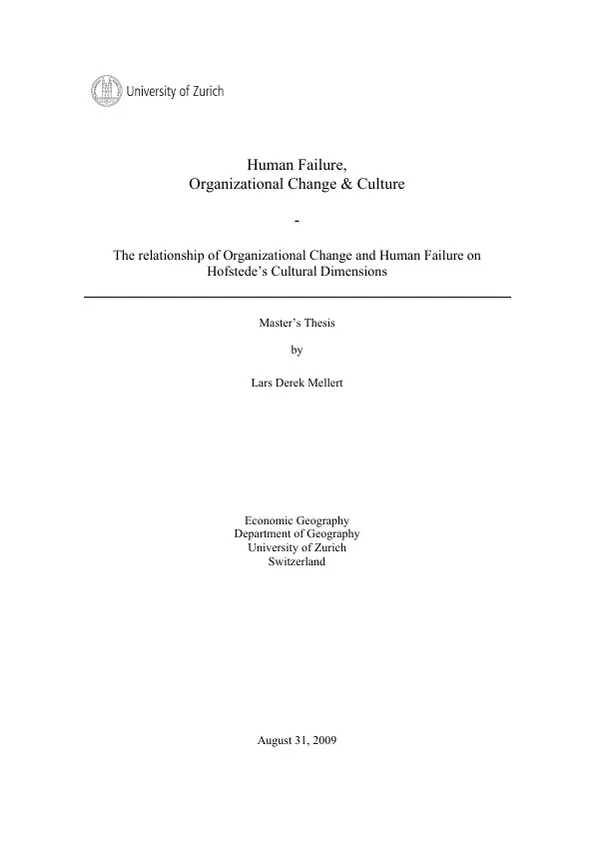This study supports, that culture influences the relationship between organizational change and human failure. An analysis of global large loss events shows, that more than half of all losses can be backtracked to a human failure. A closer look at the organizational background of these human failure losses indicates additionally, that two thirds of them occurred after or during organizational changes of the employer.
Because human performance is also dependent on cultural factors, this thesis investigates whether the established relationship between organizational changes and human failure features a cultural pattern of occurrence as well. In order to render an acceptable degree of comparison, the loss events are aligned on Hofstede’s cultural dimensions, power distance, uncertainty avoidance, individualism, masculinity and long-term orientation.
This study concludes, that a society’s uncertainty avoidance and its individualism are related to the occurrence of large human failure loss events. While a society’s high uncertainty avoidance is negatively correlated, a society’s high individualism is positively correlated with human failures.
It is further proposed, that a large power distance often prevents a workforce from committing human failures when their organization is changing. Trust in the vertical hierarchy gives them security. On the other side, high individualism aggravates human failures during organizational changes. The employees know that they are on their own, and that they have nobody to rely upon in insecure times.
Inhaltsverzeichnis (Table of Contents)
- Introduction
- Organizational Change
- Definition and Concept
- Reasons and Forms of Organizational Change
- Challenges of Organizational Change
- Change Management - A Key to Success
- Human Failure
- Definition and Concept
- Causes and Consequences of Human Failure
- Human Error in Organizational Change
- Culture - A Determinant of Success?
- Definition and Concept
- Hofstede's Cultural Dimensions
- Power Distance
- Individualism vs. Collectivism
- Masculinity vs. Femininity
- Uncertainty Avoidance
- Long-Term Orientation
- Indulgence vs. Restraint
- Cultural Influences on Organizational Change and Human Failure
- Analysis and Discussion
- Conclusion
Zielsetzung und Themenschwerpunkte (Objectives and Key Themes)
This master's thesis explores the relationship between organizational change and human failure, focusing on how these dynamics are influenced by cultural dimensions as defined by Hofstede's framework. It examines the potential impact of cultural differences on the implementation of organizational change and the likelihood of human errors during these processes. Key themes include:- The dynamics of organizational change and its associated challenges.
- The various forms of human failure and their potential consequences within organizational contexts.
- The role of culture in shaping organizational behavior, including its influence on change processes and human errors.
- The application of Hofstede's cultural dimensions to understand the relationship between cultural influences and organizational dynamics.
- The potential implications of cultural differences for successful change management.
Zusammenfassung der Kapitel (Chapter Summaries)
This section will provide summaries of the chapters, excluding the conclusion and any sections containing major revelations or spoilers.Schlüsselwörter (Keywords)
This master's thesis explores the interplay of organizational change, human failure, and cultural dimensions. It analyzes the relationship between these factors using Hofstede's cultural framework and examines the impact of cultural influences on change processes and human error within organizations. Key terms include organizational change, human failure, cultural dimensions, Hofstede, change management, power distance, individualism vs. collectivism, masculinity vs. femininity, uncertainty avoidance, long-term orientation, indulgence vs. restraint.- Arbeit zitieren
- Lars Mellert (Autor:in), 2009, Human Failure, Organizational Change & Culture, München, GRIN Verlag, https://www.hausarbeiten.de/document/206881


